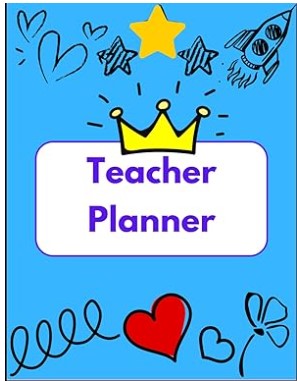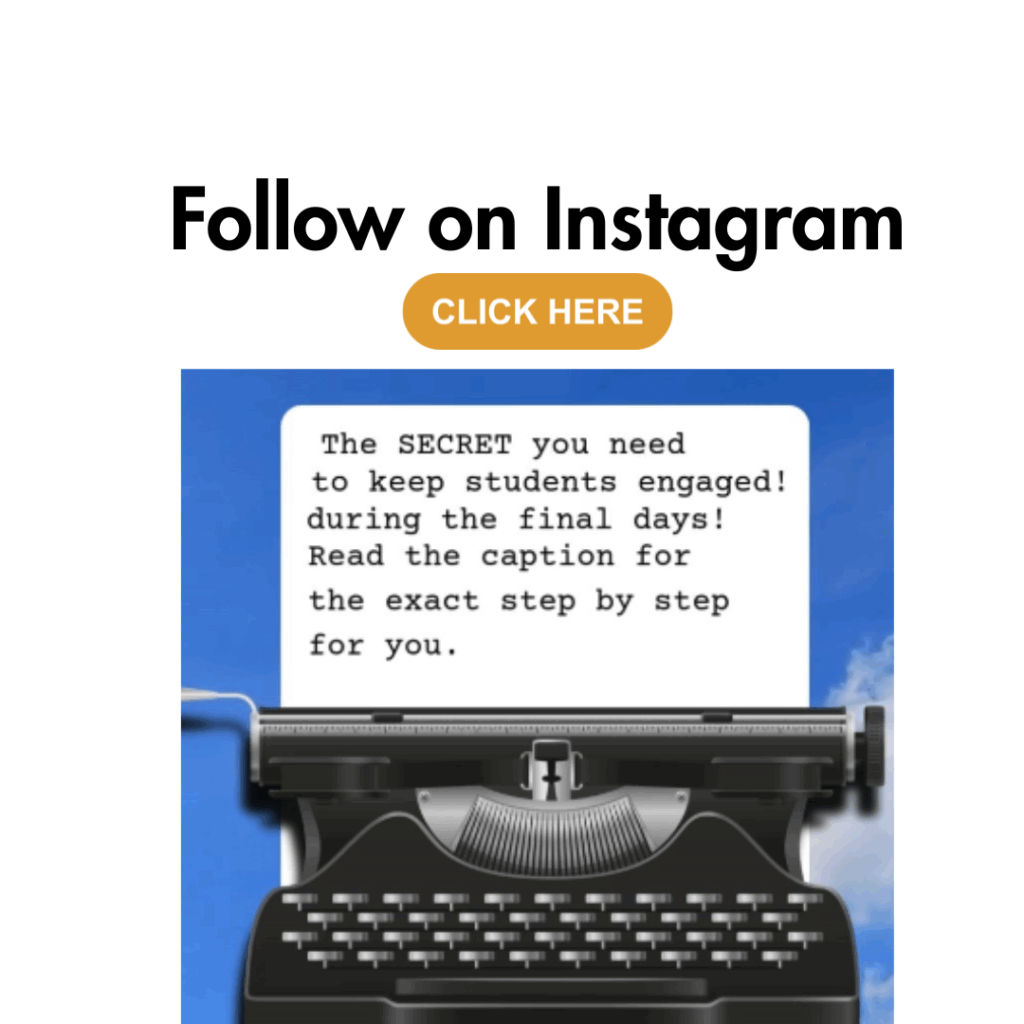Last updated on May 22nd, 2025 at 04:32 pm

The last thing on your mind at this time of year is planning for the fall. You have spend over half of the year in a classroom, and now you want to disconnect. But hear me out—your daily teacher planner could be the thing that gives you peace of mind, clarity, and yes, even excitement about what’s next.
What You’ll Learn About Teacher Planning in This Post
By the end of this post, you will be able to:
- Understand why a daily teacher planner helps reduce stress and increase focus
- Use a weekly teacher planner template to break curriculum into manageable chunks
- Walk into the school year with confidence, knowing your planning system isn’t just cute—it’s clear and intentional.
Why You Need a Daily Teacher Planner (Even Over the Summer)
Think of planning a vacation-you book a hotel, decide on the activities, and save up the money. This concept is exactly the same way with lesson planning. A plan provides clarity! Without clarity, there is unnecessary stress, chaos, and the objectives slip through the cracks. Using a daily teacher planner helps you see the big picture and the day-to-day events. You go from scrambling to teaching, interacting with your students, and quite frankly having a lunch break.
How a Weekly Teacher Planner Template Simplifies Curriculum Planning
Planning lessons feels a lot like planning my kids’ birthday parties. You can’t do everything once, so you chunk it!
- Order the balloons on Monday.
- Purchase the cake on Tuesday.
- Call my sister, yet again, on Wednesday to remind her of the date.
- Pick up party favors on Thursday.
- Enjoy the party on Friday.
How to Actually Use Your Teacher Planner
Your teacher planner isn’t just a place for stickers—it’s your secret weapon. Here’s how to make it work for you:
1. Set Up Weekly Anchors
Start each week by naming one focus skill, one strategy, and one student goal. Example: Focus Skill: Author’s Purpose. Strategy: Graphic organizers. Goal: Increase participation in partner discussions.
2. Use It as a Teaching Journal
Quick notes = future success. After a mini-lesson, jot what worked, what didn’t, and that genius thing your student said that you will forget by October. Your future self will thank you.
3. Color Code for Quick Glance Wins
Choose a color for each subject or small group. When you open your planner, you instantly see where your energy is going—and where it needs to go.
4. Add Sticky Goals
Use a sticky note column for Next Steps or Student Needs. Move them week to week without rewriting everything. Flexible.
5. End Each Week with a 5-Min Reflection
Use these prompts:
- What went well?
- What needs tweaking?
- Who needs a confidence boost next week?
A teacher planner doesn’t just keep you organized—it keeps your why front and center.
Sample 6-Week ELA Planner Breakdown (Copy This!)
When it comes to teacher curriculum planning, a clear structure is everything. Whether you’re using a printable or digital ELA planner, breaking the year into smaller chunks makes lesson planning feel doable—not daunting. Here’s a sample 6-week breakdown you can plug straight into your planner:
- Weeks 1–2: Launch routines + text features
- Weeks 3–4: Fiction comprehension + subject-verb agreement
- Weeks 5–6: Informational texts + editing practice
- Weeks 7–8: Poetry + figurative language
- Weeks 9–10: Writing structure + transitions
- Weeks 11–12: Review + small group reteach
Need a starting place? Grab this lesson plan template to get you started.
Make the Most of Your Teacher Planner—Daily, Weekly, and Long-Term
The best lesson plan organizer is one you’ll actually use. Your daily planner is where the magic happens. This is where you map your today’s lesson, group rotations, and track student data. I use mine to write quick mini-lesson notes, guided group focus, and exit ticket ideas. It helps me stay focused on one thing at a time without losing sight of the bigger goal.
Use Your Planner to Spiral Standards All Year Long
Using a teacher planner template to connect your plans with standards keeps your instruction purposeful. Don’t just teach a skill once and move on—plan to revisit and spiral them all year long. Keep the content fresh.
- Map TEKS or CCSS to each unit
- Track which skills need spiraling (hello, main idea)
- Align your mini-lessons and assessments
Conclusion: Plan with Confidence Using a Daily Teacher Planner
You don’t have to be fancy-you just need a plan. By using a daily teacher planner, you have the template or foundation to go into next year confident, prepared, and dare I say excited.
Want a fun planner that is purposeful and fun? Check out the Plan, Teach, and Doodle Planner by clicking on the image. 👇

What’s your biggest challenge when planning your ELA year? Let me know in the comments—I’d love to help!

